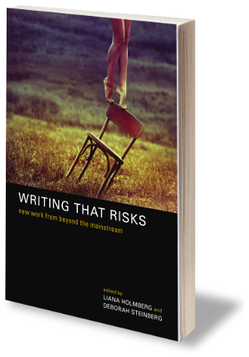Treaty about the Dimension of Joint Viewing Nikolai Leskov’s The Enchanted Wanderer: In Search of the Holder of Content (on the Ocean of Perception with or without You) by Arnie Bodette
Treaty about the Dimension of Joint Viewing Nikolai Leskov’s The Enchanted Wanderer: In Search of the Holder of Content (on the Ocean of Perception with or without You)
Arnie Bodette
I. I’m Gone, I’m Gone, You See
If you view a film consisting of randomly shot footage—scenes of the everyday life without “me for you”—it is narrating the fiction of narrating a non-narrative.
Something is happening. Never know what; there are events. This is the new normal.
The everyday perception is an unstoppable and powerful activity of basic needs and is that which creates the unknown actor behind the camera. Of course.1 Transcendental time as the condition of possibility of a time-based event. The everyday departs there, from the unknown.
Try to remember but do not substitute memory for perception. It’s hard work, you know.
Here the frame that is itself a content of the work is inspired by Nikolai Leskov’s The Enchanted Wanderer: the novel deconstructed into philosophical and theoretical ideas as text that can be viewed by language explanation. Here the narrative structure of the work gets implemented into a passage between illustration and conceiving—even though this passage is evoked by the narrative structure itself. What came first cannot be perceived. Now essential questions can only ask for the “Holder of Content” but they cannot already contain the answers the ways they did before. Therein lies the “field of free pictures” or the “ocean of perception.” It cannot be challenged by anyone. What is a fragmented thought?
II. The Assurance for an “Alive” as a perpetuum mobile (or: what baffles the human intellect?)
The presence of death inside pictorial-visual perception remains essential to the feeling of being alive during all possible textures. Cognition at this point refuses to decide whether one or the other acts as the condition of possibility here. It is one thing to acknowledge this but a more complex and totally other process to roam on the “field of free pictures.” To create an environment that is needed as an assurance and a pledge for an “Alive” means to give in to the aporia of a prospective present (i.e. hope or belief) as a pictorial past. Let-Go-Sentence. A death-picture. A religion in perception.
III. The System of Perceiving as the primus motor of willingness and vice versa
Here we have the System of Perceiving as a self-producing perception. It is not allowed to decide between the perception of a picture (or the act of recollecting consciousness) and the picture, picture-memory. Brain-wise this can be understood by using classical cognitive pathways but is not so easy to apply. Viewing is very fragile. Therein lies the willingness to appreciate conscious and unconscious as film material as well as mind image. In the same way the qualitative being of a color expresses in its volumetricity. The willingness allows the System of Perception to be its own environment that accredits the constant upcoming of a progressive world that looms and that is not now: a dialectical temporalisation in which a distance creates itself out of a relation between desire and memory.
IV. The fiancé of his beautiful bride, “the uncanny”
The Enchanted Wanderer’s journey is the positive acceptance of the absorption of a naïve idea of surface and reality. As soon as it is written-about-surface it becomes a term of sublime reality. A term that cannot only be consumed but entered by the adventurer’s textual abilities. The adventurer is enchanted by the “mysterious grounds of everyday perception.” A reality that is engaged with the uncanny.2 Of course. The aura of the material world has him and holds him (the adventurer). He now gets eaten by his own texture, which he sees. Reached is the intrusive part of the experience of viewing. What is a not-real-present really?
V. Film as a medium of emotional language (or: between “the uncanny” and her yet-to-come bridegroom)
Experience of fragmented speech and speaking pictures bridges ”sensory senses” and “semantic senses.” Of course. Acknowledging this we are already advancing in the direction of speaking in a language without concrete or objective meaning. In a practical way of viewing this cannot be fully achieved as the viewer/adventurer is kept away from any idea of source because the mediality of film safeguards him like a child. Mediality is the big-nanny-factor that keeps the viewer safe while two uncanny and not-yet-there entities dispute. The viewer is always in danger of possible death by the parent-entities of his own fragile dimension. Only humble mediality covers and sheds him (the viewer) by which she herself is a make-believe-mother. Filming is a symptom of viewing the mediality of events that only appear as themselves when sequences remain physical incidents, filed and received already in the possibility of doing it again and again and again.
VI. The machine of repetition is not yet invented
1 Of course means, every time it is used here, not a logical derivative but a simple originality, of course.
2 A weak word for what is really canned in here. Of course.
©2017 Arnie Bodette
=====
 Arnie Bodette is a writer currently based in Berlin. She recently graduated from Humboldt University-Berlin and is presently writing her first novel. In the past her works have been included in several lectures and exhibitions around Germany and the UK.
Arnie Bodette is a writer currently based in Berlin. She recently graduated from Humboldt University-Berlin and is presently writing her first novel. In the past her works have been included in several lectures and exhibitions around Germany and the UK.
Join our community
Get the book
